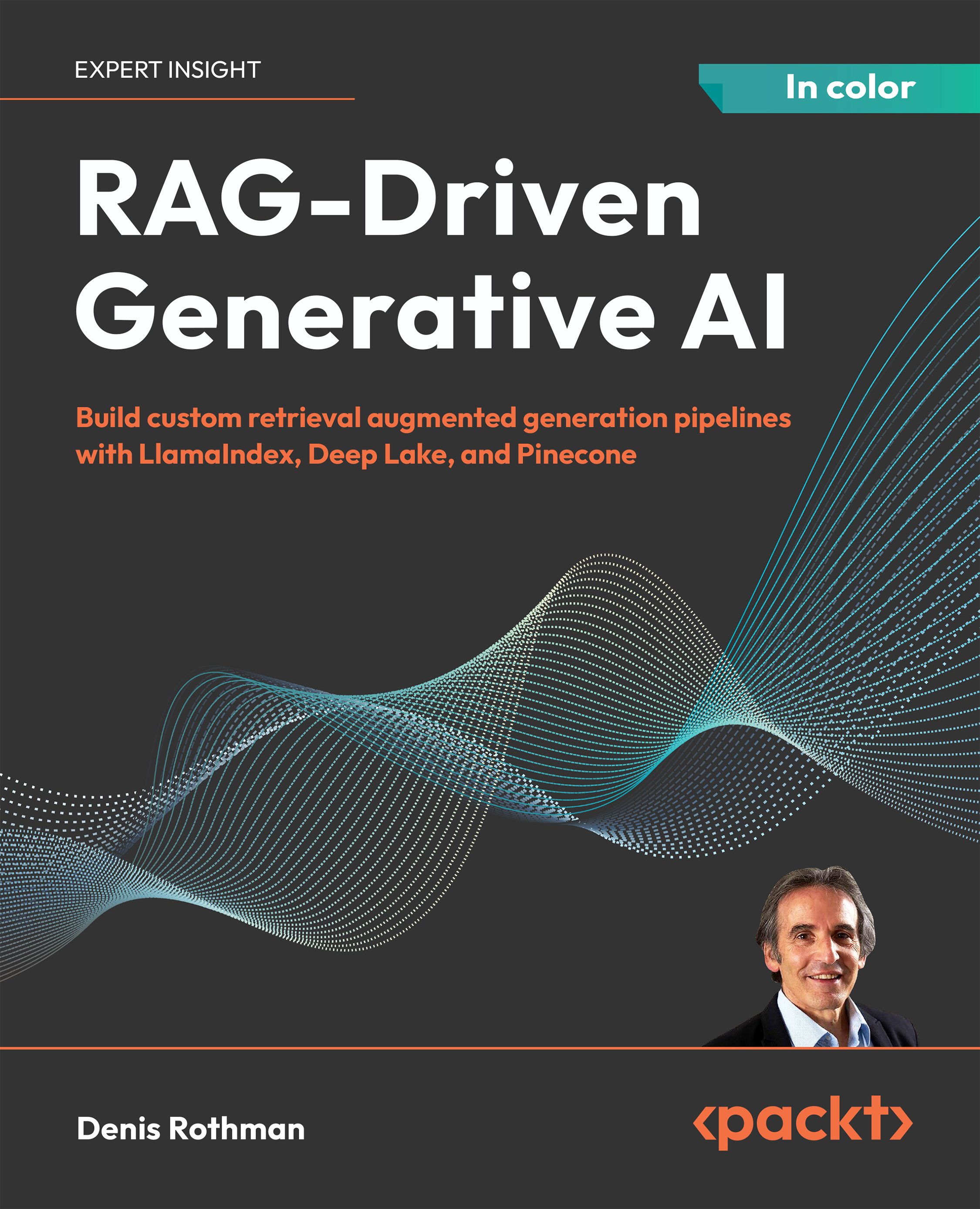Pipeline 2: Scaling a Pinecone index (vector store)
The goal of this section is to build a Pinecone index with our dataset and scale it from 10,000 records up to 1,000,000 records. Although we are building on the knowledge acquired in the previous chapters, the essence of scaling is different from managing sample datasets.
The clarity of each process of this pipeline is deceptively simple: data preparation, embedding, uploading to a vector store, and querying to retrieve documents. We have already gone through each of these processes in Chapters 2 and 3.
Furthermore, beyond implementing Pinecone instead of Deep Lake and using OpenAI models in a slightly different way, we are performing the same functions as in Chapters 2, 3, and 4 for the vector store phase:
- Data preparation: We will start by preparing our dataset using Python for chunking.
- Chunking and embedding: We will chunk the prepared data and then embed the chunked data.
- Creating the Pinecone...
































































